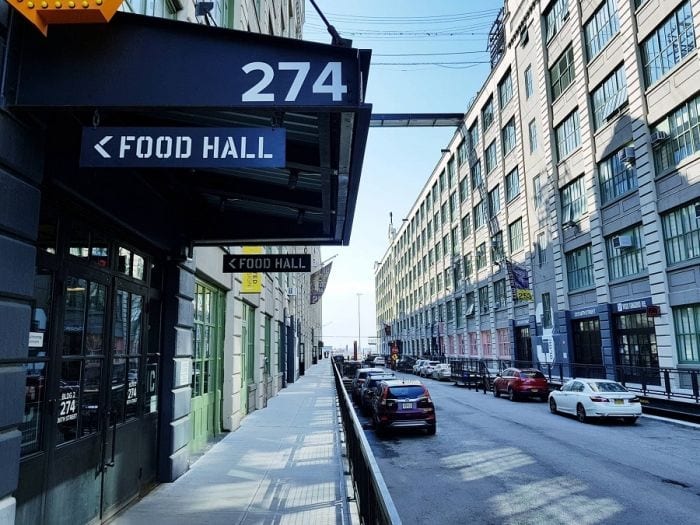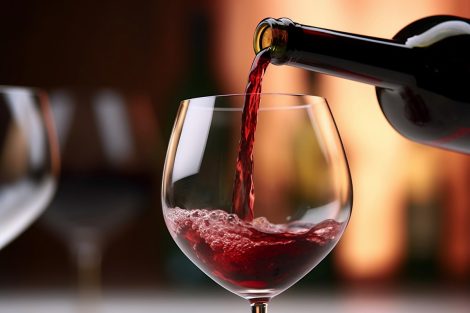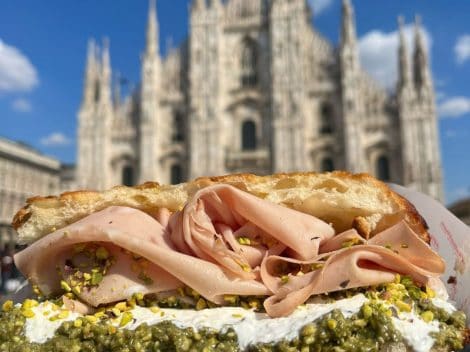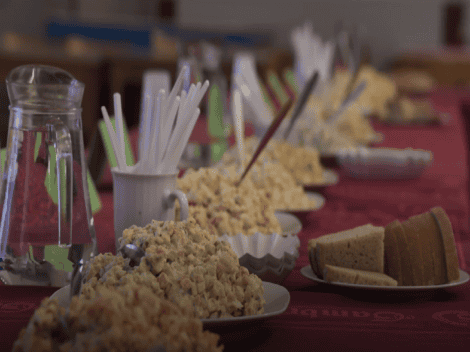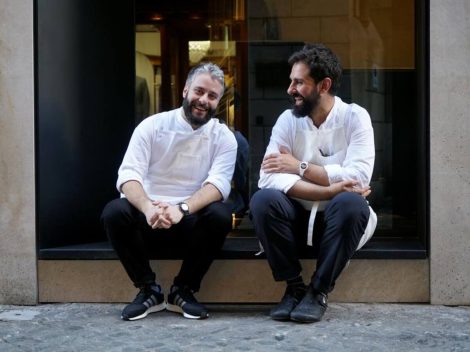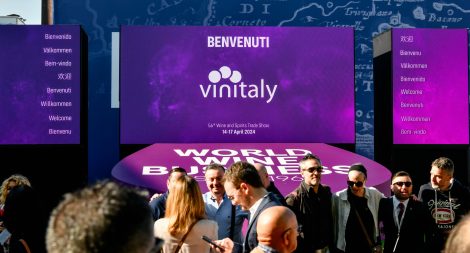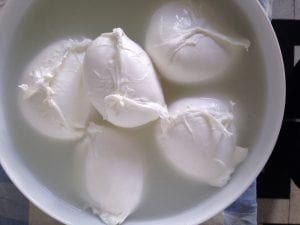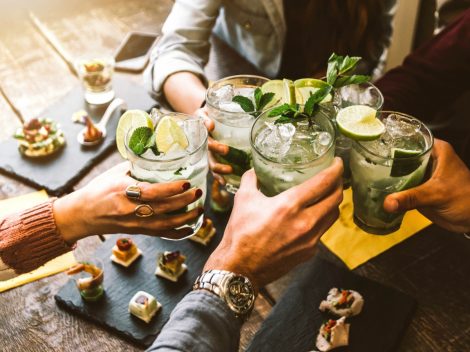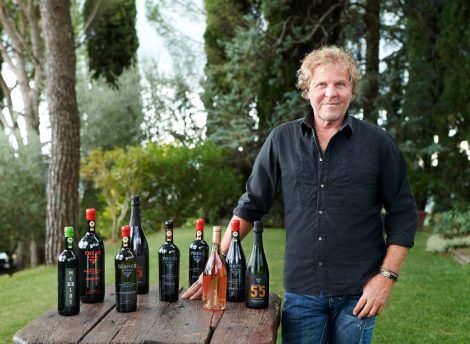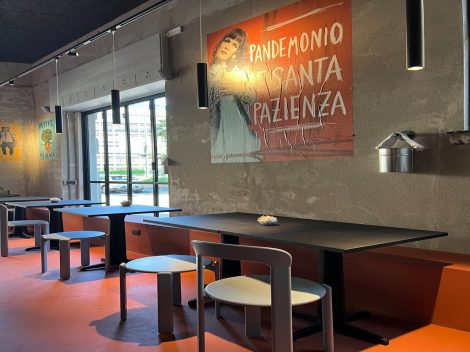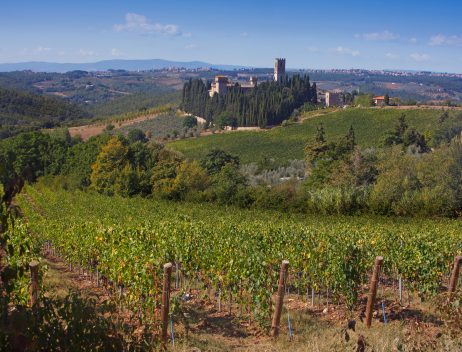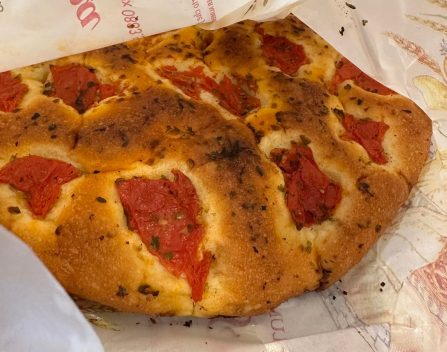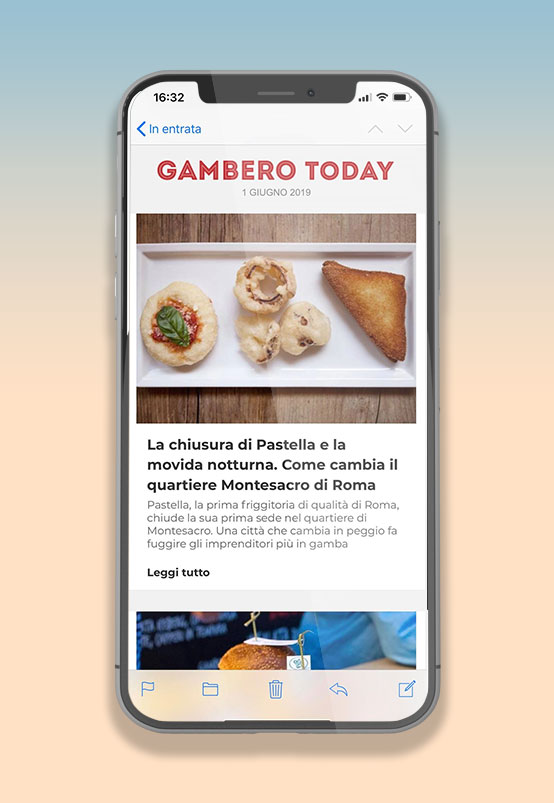In the beginning it was the Bush Terminals, nothing to do with the Bush political dynasty, rather the Dutch entrepreneurial legacy of the Bosch family who settled in New York when the city was still called New Amsterdam. Over the years in the area of Sunset Park overlooking the southern bay of Manhattan and facing the rock where Lady Liberty stands, one of the most organized systems of storage, production, manufacture of America was first born. Connected via rail and sea, and designed for maximum efficiency, the huge industrial warehouse has now evolved, and, for the times, it’s now technologically efficient and highly innovative.
The Bush Terminal crisis
Like all structures of this kind, even the huge Bush Terminal fell into crisis in the last decades of the last century. In the '70s, the 25 thousand employees who worked there (it had become the largest clothing production center in New York, when no competition what yet posed by China) worked on a surface of 81 hectares, but at that point the decline had already begun. In the 1980s the area was renamed Industry City because the Bush business no longer existed. Beginning in the 2000s, artists and creative types began to settle here spontaneously, so much so that in 2014 the New York Times spoke of this place as the "Soho of Brooklyn." Things began to take a different turn from 2013 when the entire area was acquired by real estate developer Jamestown, the same person who owns the legendary Chelsea Market in Manhattan.
The Jamestown redevelopment project
To develop the gigantic area and transform it into a project that would work at an urban level and that would be profitable on an economic level, Jamestown focused everything on the industrial and productive legacy and therefore on the identity of these huge warehouses. This was a space intended in the first place for production: be they shows, resident art, technological start-ups, events and exhibitions, but also and above all for production. And that's precisely what happened. Not just in terms of art, craftsmanship, design, but also in regard to food. Industry City, in short, is turning into a curious aggregator of gastronomic concepts with a trump card that's very rare for Manhattan: space. Here there is a lot of space and it's relatively affordable. This means it's easier to produce in the same place where products are sold and served. All this gives way to experiments conducted with new formats in a creative ecosystem, one in which each activity supports the other. With this strategy Industry City has gone from hiring, as an article by Artribune of almost a year ago, 1900 to 6500 "employers". This happens in a context where production, culture and sales co-exist and enrich each other in a sort of new creative welfare. An example: the beautiful Wanted Design store sells international objects (many Italian, especially Alessi), but also and above all accessories produced by resident designers of Industry City.
Industry City Food
Needless to say, the spaces of Industry City are turning into a considerable attractor for the world of food. As we said there are many square feet available - and many realities need that space. In addition to space there are the people, there are flows, and customers because the ecosystem of the city works and the thousands of makers, startuppers, artists and artisans need to feed themselves. There is a large food hall in Building 2 which actually resembles the Chelsea Market, and then there are some very special foods on offer in the other buildings, including on the ground floor. What follows is a guide, that takes into account that the project is still in progress and the new openings in the coming years will be many.
BAKERIES AND CHOCOLATIERS
None other of these businesses require the huge spaces that only Industry City can provide in New York. Hence the chocolatier Li-Lac and bakeries already popular in town such as Colson or One Girl Cookie that have branches here with stores on the front and very large production workshops in back.
RESTAURANTS
The most popular is perhaps Avocaderia. Already no longer in fashion in Europe, the trend of eating avocado in every shape and form still seems to be trendy in New York and this store in Industry City proves it. Not bad at all is also Ejen’s Korean cuisine as well as Taco Mix and Kotti. The former serves up fresh tacos, Kotti on the other hand is a small counter behind which perfect kebabs are served Berlin-style, just like in Kreutzberg.
MEAT
You will not believe it but here in Industry City you will find the branch office of Burger Joint. The legendary queues at the flagship historic home of this legendary hamburger-only restaurant in Midtown, here are a thing of the past. Then there’s the Ends Meat project, a delicatessen that uses all the parts of the animals that they slaughter. And before summer Hometown barbecue also should open, the branch of a celebrated hyper carnivore restaurant based in nearby Red Hook. Which means abundance of ribs, brisket, pastrami and pulled pork.
EXCEPTIONAL GROCERY STORES
Large supermarket grocery stores are the next Industry City development. Due to open is Breadberry adn the first ever expansion of Sahadi's, historic Brooklyn food store that since the beginning of the twentieth century had never moved and that will set up its first branch here. Due to open soon is also Japan Village, large Japanese market containing izakaya, food stores and much more contained in a––speaking of space––1800square meter area.
DISTILLERIES
Open only on Friday and Saturday but unlike all other food vendors located in a panoramic position on the roof of one of the buildings in the area, Industry City Distilleryis one of the symbols of the rebirth of this neighborhood as are its vodkas. But production (the concept of production goes back into the liqueur as well as the concept of space) does not stop here: there’s Barrow's Intense that crafts in IC a ginger liqueur, and also Brooklyn Kura which is a sake production project made exclusively with American ingredients. Here in Industry City there is a very charming tap room, in one of the leafy courtyards, where patrons can taste the products seated at the counter: one of the most original projects of the entire district.
COFFEE
Celebrated in New York of its “most expensive coffees in town”, Extraction Lab is one of Industry City's coffee shops. It is actually the show room of a well-known company that produces ultra-technological coffee machines. Here a row of docks extract the beverage (but also brew tea and herbal tisanes) are on a long counter in a minimalistic environment. In addition are books, magazines and plants. To eat there's only some Nordic style treats. The coffee beans alone, however, come from the most reputable roaster in the world. Which justifies the price. Other coffees? There’s Maglia Rosa, Italian style brews.
COOKING SCHOOLS
Ubiquitous. For the time being there’s “only” Brooklyn Kitchen which welcomes with upcoming opening and inviting free courses. But in all likelihood, it's just the first of a long list of cooking schools that will land here in the next few years.
WINE
Space, once again. More than a wine shop, Moore Brothers Wine Company looks like a huge warehouse of wine import export. This is where the Industry City community comes to purchase a fine bottle of wine.
Obviously, the list does not end here both with regard to what's already here but above all with regard to what will be opening soon. The Industry City project is taking off and in the coming months the plans of new businesses set ups here will most likely intensify. It appears that large NY restaurant groups (including Torrisiand Enrique Olvera) are interested in joining in. All development managers have to do now is preserve the role of the project. Rents are already increasing, investments have been considerable (one billion dollars at the end of 10 years of work) and must be repaid, but this is likely to alienate artists and creators as is already happening. If Industry City succeeds in not distorting its nature and maintains this mix of functions and population, it will be one of the most interesting urban (and gastronomic) projects in the coming months and years. On the other hand, it could simply become a new successful real estate operation in New York, not worthy of any future attention.
Industry City – Usa –NY 11232 – Brooklyn - 220 36th St #2-A - +1 (718) 736-2516 ext. 200 - www.industrycity.com
by Massimiliano Tonelli
